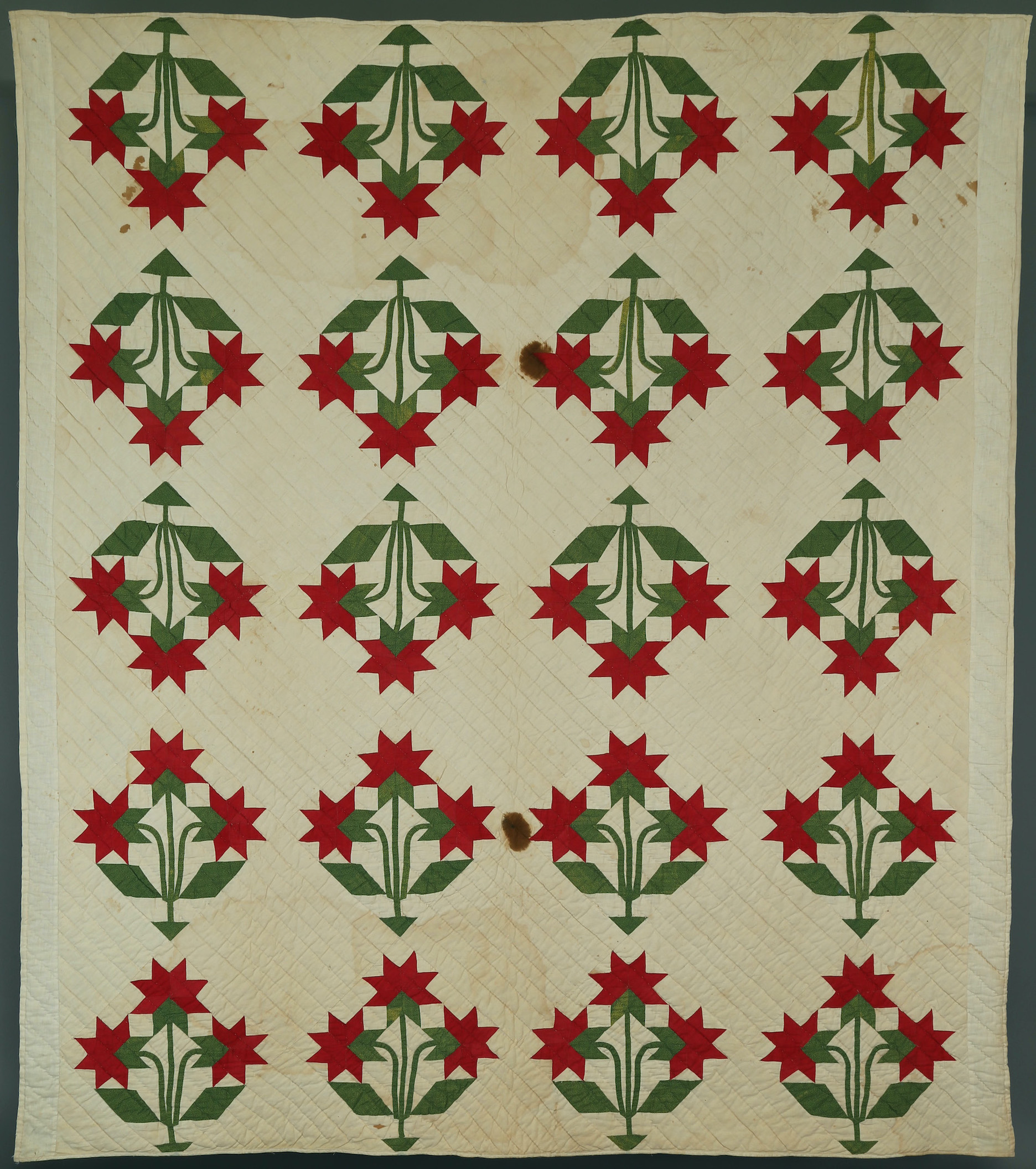Not all Carolina Lily Quilts Were made in Carolinas
By Marian Ann J. Montgomery, Ph.D.,
Curator of Clothing and Textiles, the Museum of Texas Tech University
The Carolina Lily Pieced quilt block pattern is one that has been made since the 19th century. Many variations of the basic three blossom pieced block exist. Barbara Brackman’s An Encyclopedia of Pieced Quilt Patterns records drawings of about four dozen variations, most with different names.
For this block, the way the flowers are joined together vary as do the execution of the stems and whether or not the flowers are in a bowl. Additionally, there is a decision to be made by the maker about how the blocks will be arranged so that the pattern reads properly on the bed.
Carolina Lily variation quilt, with a family history of being made by Caroline Elizabeth Reeves Bean before her death in 1854 in Grayson County, Texas, Gift of Eppie Edsall Barrier, TTU-H1971-039-002. Image courtesy of Museum of Texas Tech University.
This particular quilt came into the collection of the Museum of Texas Tech University in 1971 with an attribution of being made by the donor’s great-grandmother, Caroline Elizabeth Reeves Bean, before 1854. Caroline Elizabeth Reeves Bean was born in 1817 to a mother from North Carolina and a father from South Carolina. Perhaps Caroline, the oldest of their seven children, chose the Carolina Lily pattern in their honor or perhaps she was born in one of the Carolinas. At some point Caroline and her parents were in Pottsboro, Grayson County, Texas which is along the Oklahoma/Texas border north of Dallas, as all are buried there.

This particular variation has an interesting arrangement of the leaves and base. It does not have a bowl or vase as some Carolina Lily patterns do. In looking for a variation of the name in Brackman’s Encyclopedia, it most closely matches pattern number 765.31, which lists it as the Pennsylvania Tulip and is attributed to Mountain Mist. The Mountain Mist Blue Book of Quilts, published in the 1930s shows this to be pattern 27 and illustrated an example. The pattern explanation is as follows:
The arrangement of the leaves and base are very similar. Although this pattern was published in the 1930s it doesn’t preclude a variation of it being made earlier. Mountain Mist developed patterns based on what was popular and often made slight variations to patterns developed by others. What is interesting is the use of a printed fabric in this Mountain Mist example. The head of Mountain Mist thought all quilts were more elegant in solid colors.
An interesting comparison is a variation of the Carolina Lily, called the Pennsylvania Tulip documented in the Quilts of Tennessee Documentation that can be viewed on The Quilt Index.
Carolina Lily has been a favorite quilt pattern of quilters over the years and continues to be made in the classic arrangement with red flowers and green stems.
Learn more about the Museum of Texas Tech University Textile Collections.
Click here for related articles from the Museum of Texas Tech University Textile Collections.





.jpg)



My husband and I were among the first residents to move into the first apartment building available in Tech Village only a block or so from the museum.
Thank you for all your wonderful work!
annwquilts
RSS feed for comments to this post